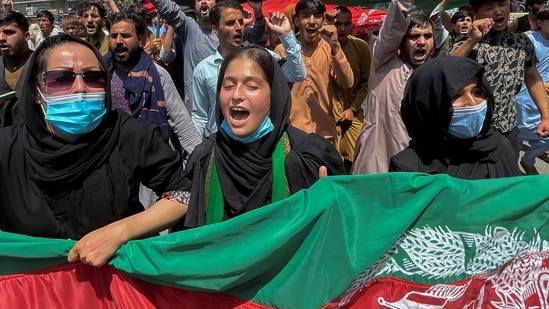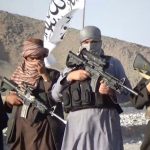The Taliban’s women policy stems not so much from religion itself as from traditions that are based on religion. The Taliban’s takeover will not significantly change the rights of women in rural areas, but it might ruin their life in cities.
With a generation of women grown up in 20 years, who enjoyed some democratic freedoms in this country, tribal and religious traditions in the countryside remained unchanged. As they existed on the sideline of democratic practices in large cities, the superimposed European way of looking at women’s rights did not succeed in finally getting to Afghan society. That is why the Taliban, as a movement ideologically based in the countryside, will not just reject women’s rights as a thing infiltrated from abroad, but will also easily fight it in cities where nobody resists conservative religious movement.
With Taliban’s rhetoric having acquired more liberal views of women’s rights since 2001, the things won’t change a lot, actually.
The wide-ranging exclusion of Afghan women from the social and political spheres was a major feature of Taliban rule before the fall of 2001. The Taliban’s public rhetoric on this issue has changed significantly, but they have not followed through with visible practical steps regarding the social and political inclusion of women in the areas they control, except of some improvement of girls’ education. According to a June 2020 Human Rights Watch report, “strict social norms regarding dress—especially for women—and women’s movements are common among communities in much of rural Afghanistan, including in conservative government-held areas.” Here, the Taliban often act not against but in conformity with the majority of public opinion.
In the Resolution of the Intra-Afghan Peace Conference in Doha in July 2019, initially called an Afghan dialogue meeting, the Taliban agreed to assure “women rights in political, social, economic, educational, cultural affairs within the Islamic framework of Islamic values” in the future. That message was reiterated by the February 2021 “Open letter to the people of the United States of America” from one of the Taliban’s deputy leaders, Mullah Baradar, where he emphasized that the Taliban were “committed to upholding and guaranteeing all rights of women afforded to them by Islamic law.”
The Taliban attach such formulas to many of their statements about rights and freedoms to distance themselves from what they see as ‘Western’ concepts. At an Afghanistan-related conference in February 2019 in Moscow, Taliban chief negotiator Mullah Sher Muhammad Abbas Stanakzai told the media that “Islam has given women all fundamental rights, such as business and ownership, inheritance, education, work, choosing one’s husband, security, health and right to good life.” He also said that women could get elected, come into high political office—except that of head of state and chief justice. However, he added, “If the world thinks we give the women the rights America or the West gives to them, this is not congruent with the culture and tradition and our religion.” Taliban deputy chief Mullah Baradar repeated this position in a speech delivered in late 2020 where he stated that “the only work done under the shadow of occupation in name of woman rights is the promotion of immorality and anti-Islamic culture.”
In the July 2019 Doha meeting, a number of female participants attending from Afghanistan approached the Taliban delegation on the issue of ‘Islamic dress’ for women. They replied that no full burqa was required and that a headscarf (chaderi) was sufficient. Some of the women saw this as a change in the Taliban’s “mindset,” having become “more willing to discuss women’s rights.” The impression of more openness was also conveyed after an earlier first direct meeting between Afghan women and Taliban in Oslo in mid-2015.
However, these statements may only have been diplomatic gestures designed to placate urban women that Taliban delegates encountered in meetings abroad. Human Rights Watch has reported that “in more diverse or urbanized areas, Taliban officials have sanctioned and reinforced rigid social controls in communities that had previously not observed such practices” after gaining more influence there. Women do not play any active role within the organized structures of the Taliban. There are no women on their negotiating team in Doha and no reports of active female involvement in the Taliban’s parallel administration, let alone the frontlines.
In general, the Taliban’s position on the social and political role of women remains conservative and often contradictory. This is also reflected by another statement from the February 2019 Moscow meeting. The Taliban chief negotiator, Stanakzai, stated there that women’s rights were “imposed on Afghan society” and that in “the name of women’s rights, there has been work for immorality, indecency and circulation of non-Islamic culture.”
Tribal codes are important structures that provide security and order within the tribal community. They are important in shaping and defining behavior among men and women. Honor is one of the most desired status symbols in tribal Afghan society, and an important element of the cultural code of the ethnic majority of the Pashtuns. It is considered the duty of the men to uphold the respectability of their women. Purdah (prevention of men seeing women, both through physical segregation and by covering women’s bodies so as to hide their form and skin) is a key element in the protection of the family’s pride and honor and an essential component of the honor code. The strict segregation related to Purdah is not practiced in all parts of Afghanistan. Nomadic Kuchi women, for instance, are usually not segregated from men, neither are the Shiite Hazara women required to honor code.
Many young women of Kabul never wore the chadari (head-to-toe cover) prior to Taliban rule; that was a garment worn only by their grandmothers or women in the rural areas in the south. They were allowed to work, study, and move around freely without being accompanied by a mahram (a male family member). To the rural people (especially in the south), Kabul represented a different world that called their tribal values into question and reforms were often met with fierce resistance.
In the 1950s and -60s, violence erupted between those who opposed the reforms – tribes, Mullahs and religious students – and the representatives from Kabul who were charged with implementing them. Ultimately, the Soviet Union invaded in 1979 and the resistance groups, so-called Mujahedeen fighters who were backed by the United States (US) and Pakistan, waged an anti-Soviet jihad against the Soviet forces. Some women played a supportive role to the Mujahedeen in this endeavor. They sheltered and hid them, cleaned, oiled, and repaired weapons and served as couriers. Other women, although unmistakably the exception, played a more active role. Bibi Ayesha, a female warlord, dismissed the idea that women could not fight in battle and commanded a band of 150 men in the Nahrin district of Baghlan, northern Afghanistan. She did so while conforming to Pashtun culture, and insisted a male relative accompany her into battle.
The Taliban established some form of a popular support base by fighting off the local bandits and criminals, who robbed locals and harassed their women. Often, the strict rules of the Taliban were regarded as a solution to the violence and insecurity that dominated the region. In Afghanistan, especially the parts dominated by other ethnicities, the Taliban were never able to establish moral order. In the south, the Taliban regime was deeply ingrained in Pashtun society.
In a patriarchal, patrilineal society, women still face deep Islamic conservatism and family and community disapproval for challenging traditional gender roles.
In rural areas, the struggle for women’s rights is basically perceived as external aggression. Considering the history of Afghanistan, this aggression is perceived as an external invasion targeting to destroy national and ethnic identity. That leads to rejection and resistance, therefore, which means the society cannot take it.
Opponents of the Karzai government and Western influences often depict the focus on women’s rights as countercultural and an intrusion of the West. Supporters of women’s rights are often targets of threats and attacks because of their perceived association with Western interests.
The Taliban website The Voice of Jihad illustrates and enhances this sentiment. It refers to the aid the West sends to educate women in Afghanistan as the “debauchery of women”. Furthermore, it states that “American support for women is in reality a premeditated plan for derailing and disturbing their tranquility. The invading forces are trying to focus that part of society which is vulnerable and can easily be exploited for the wretchedness of our society.
Based on research of Ahmed Rashid, the Taliban had a secret service that employed between 15,000 to 30,000 official spies and over 100,000 paid informers, some of which were women.
They are likely to be motivated by tribal traditions, just as some tradition-bound women in several countries in Asia and Africa support FGM/C practices.
Some interviews suggest Taliban women claimed women should remain at home and perform domestic duties. The findings of journalist Terese Cristiansson suggest the Taliban women live in current insurgency. She spoke with some Taliban women from Ghazni and Kunduz, who argued Afghanistan would be safer once the Taliban reclaim power. Beside these supporting roles, it appears there are no women in the higher echelons of the Taliban. In addition, although the Afghan Taliban have embraced the tactic of suicide attacks, there seems to be almost no room for women to engage in suicide attacks. During the insurgency so far, there are only a few cases known of suicide missions performed by women in Afghanistan. Who those women were and where they came from (whether they were, for instance, Uzbek, Pashtun, Arab or Pakistani) remains unclear.






Pingback: #70 Weekend reads – wars, hurricanes, floods, fires, eating crickets… - The Digital Conversationalist